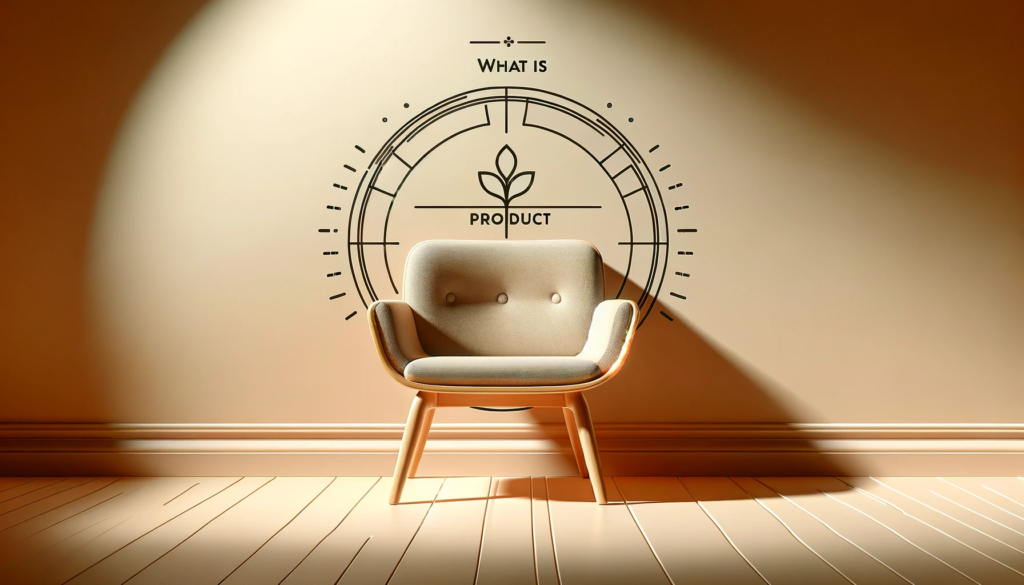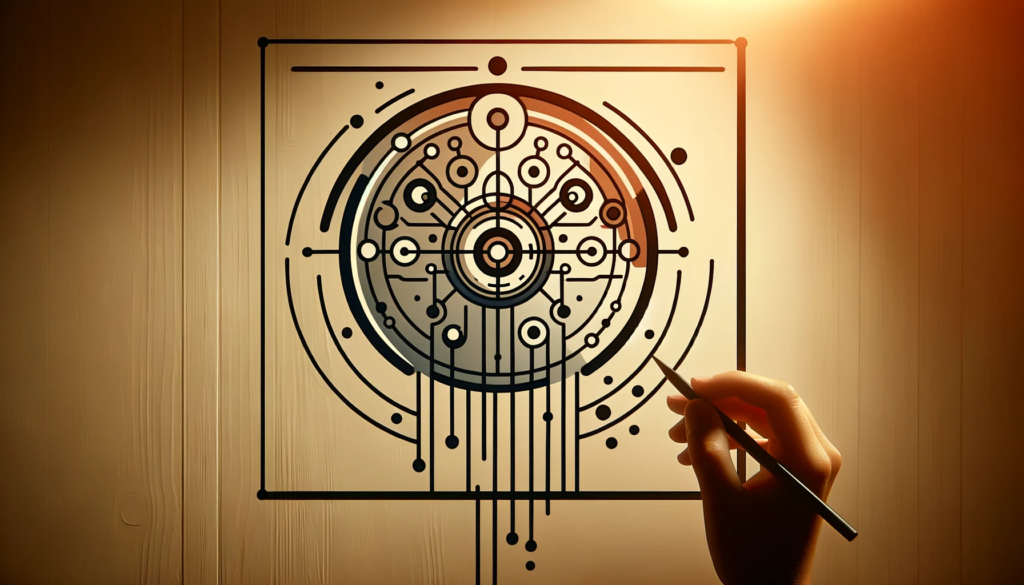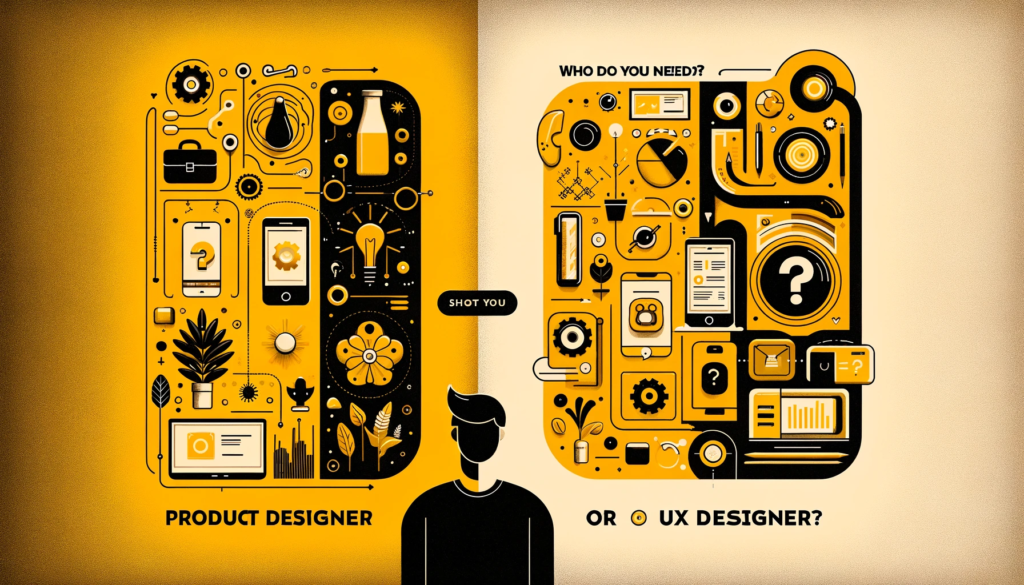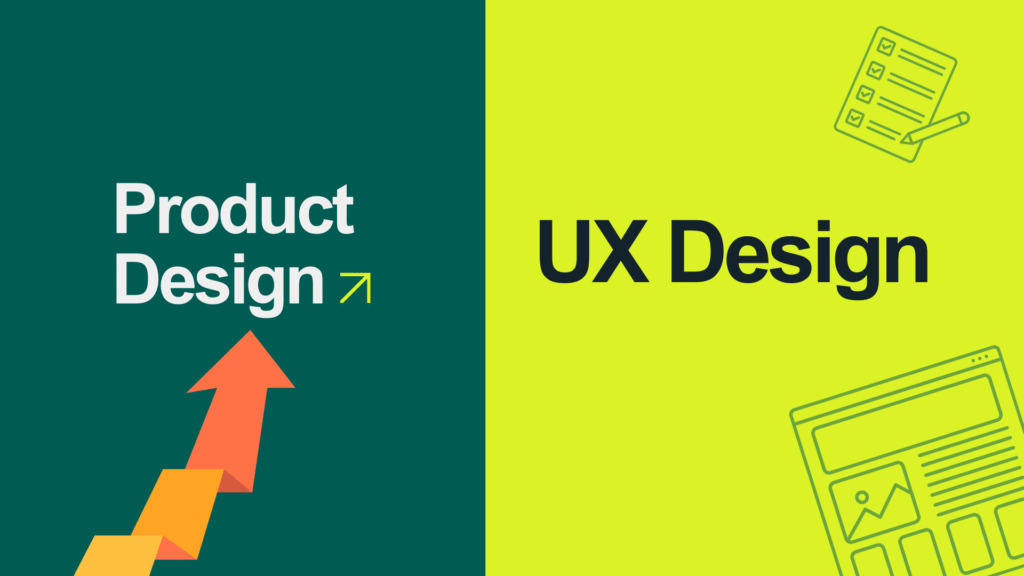Whether you’re a professional building the next big thing or a student struggling to choose a direction, understanding the difference between product design and UX design is paramount. Both are closely intertwined branches of design, but there are some differences when it comes to goals, vision, and skills. Regardless, both product and UX design complement one another when it comes to creating a successful product.
So to help you better understand the difference between the two, we’ll share with you what sets both disciplines apart and also what connects them while also discussing their future.
What is Product Design?

Product design is an application of industrial design, it is the process of imagining, defining, and realizing a product that either solves a real-world problem for users or fulfills their needs. While the scope of product design initially revolved around physical products, it is now reshaping as our world is becoming more tech-dependent.
Product design at its very core encompasses the design, development, testing, and continuous refinement of a product. Product designers create experiences that combine design and usefulness. They research the needs of the market, test different concepts, and ultimately choose the most environmentally friendly design.
Today, product designers create far more than just products, they design complete end-to-end experiences across digital ecosystems including;
- Applications
- Web/Mobile Platforms
- Wearable Devices
- Smart Product Systems
- VR/AR
Skillset of a Product Designer
- Find gaps in the market through research and conceptualize products that fulfill users’ needs.
- Responsible for sketching, prototyping, and rendering different concepts.
- Generating innovative design solutions.
- Working closely with cross-functional teams like engineers, researchers, analysts, and users.
- Using design tools like CAD, 3D modeling software, Adobe Creative Suite, etc.
- Brainstorming and developing numerous design concepts quickly.
- Ability to juggle multiple design projects with overlapping schedules.
What is UX Design?

User experience (UX) design on the other hand is focused on creating a smooth and enjoyable interaction between users and products. Rather than designing how a website, app, or other product looks, UX designers design how it works, feels, functions, and more importantly how it interacts with the users.
Early UX designers focused on the usability of interfaces and hardware but as the world became more technological and competitive, the scope of UX deepened to examine not just how usable, but how meaningful interactions were between users and the products.
UX design encompasses how easily tasks flow, whether emotional and social connections develop, and ultimately, the success and sustainability of the product. In a competitive marketplace, excellent UX creates lasting impressions that cultivate loyalty and brand value.
Skillset of a UX Designer
- Organizes, structures, and labels content and functions so users can intuitively navigate products.
- Maps user flows, touchpoints, and UI micro-interactions that comprise the product experience.
- Proficiency in sketching concepts and wireframing site/app layouts and key screens.
- Swiftly mock up digital experiences to visualize and test ideas at low to high fidelity.
- Design and facilitate sessions to observe and record how representative users navigate working prototypes.
- Considers look, feel, tone, and content structure to define the product’s visual language and experience.
- Ensures experiences can be accessed and understood by users across disabilities.
- Aligns UX solutions to key business goals and metrics.
- Proficient in applications like Sketch, Figma, InVision, Adobe XD, Axure, and more.
Similarities and Differences Between Product Design and UX Design
Following are some similarities and differences between both branches of design;
Similarities
User Focus:
Both product designers and UX designers place a strong focus on understanding user needs, wants, behaviors, and emotions in order to create the best possible experience. Their work revolves around solving user problems.
Design Thinking:
Design thinking methodology including prototyping and iteration is core to the work of both product designers and UX designers. They both aim to come up with creative solutions to user problems.
Visual Communication:
Product designers and UX designers both rely on visual communication to explain abstract software ideas and experiences. This includes user flows, wireframes, prototypes, etc.
Attention to Detail:
Subtle design choices can have big impacts on the user experience, so both roles require close attention to small details like copy, animations, and micro-interactions.
Creativity:
There is a creative problem-solving aspect to both product design and UX that requires coming up with innovative solutions. Creativity and design thinking go hand-in-hand.
Team Collaboration:
Neither role works in isolation. Close cross-functional collaboration with engineers, researchers, and stakeholders is critical for both product designers and UX designers.
Future Focus:
Part of designing a great experience means anticipating user needs down the road. Both roles have to think ahead about challenges users may someday face.
Human-Centered:
The human-centered approach is Fundamental to product design and UX design. Both put real user perspectives and emotions at the heart of design decisions.
Differences
Scope:
Product design has a broader scope than UX encompassing the totality of an end product such as designing what the product will be and what features will it contain. UX focuses specifically on user interfaces and interactions.
Process:
The process of product design tends to be more strategic and innovative, exploring various opportunities for new product directions and experiences. The UX process is more tactical. It is focused on optimizing the experience of an existing product through testing and refinement.
Skills:
While creative problem-solving is common, product designers rely more on technical skills to create functional products. UX designers concentrate more on interactions.
Tools:
Product design relies on tools like product road mapping to define plans and requirements documents to capture details. UX utilizes tools like prototyping software for mockups and analytics to measure user behavior.
Mindset:
Product design requires a commercial mindset that balances both business needs and user appeal. UX design on the other hand requires a human-centered mindset purely focused on user satisfaction and ease of use.
Timeline:
Product design projects can have longer timeframes crossing years sometimes. UX projects require shorter timeframes due to rapid testing and improving focused areas.
Goals:
The key goals of product design relate to the feasibility and desirability of the product. UX goals are centered directly on usability, ease of use, and user satisfaction.
Metrics:
Product design measures conversion rates, retention, and revenue that indicate commercial success. UX measures task completion, time-on-task, and sentiment that optimize human interaction.
Different Perspectives – Product Design and UX Design
Navigation System
| UX Perspective: The navigation should be effortless for users to find the content or features they need. | Product Perspective: Navigation controls should thoughtfully integrate into and complement the visual interfaces. |
Interaction Controls
| UX Perspective: On-screen buttons, menus, and other interactive controls must have clear visual behaviors to prevent errors and confusion | Product Perspective: Interactive controls should be placed, highlighted, and responsive in a way that makes them easy to use and understand. |
Aesthetic Styling
| UX Perspective: The visual design plays a key role in shaping first impressions of credibility and emotional appeal. | Product Perspective: Cohesive design language defines the perceived quality and aligns with the brand. |
Flexibility
| UX Perspective: In an app or website, having reusable templates or components allows easier future editing. | Product Perspective: Customization allows users more control and facilitates post-purchase personalization. |
Accessibility
| Product Perspective: The design of products with complex operations is simplified to be easy to use and navigate. | UX Perspective: Having alternate ways to navigate or interact is crucial to assist disabled users. |
Feedback
| UX Perspective: Clear feedback from the product after a user takes an action establishes an understanding of the product. | Product Perspective: Sounds, and haptics act as cues that reinforce understanding of the product and responsiveness. |
Who Do You Need? Product Designer or UX Designer?

In the early conceptual stages, a product designer is a better fit to focus on determining what capabilities the product should have and how that aligns with business objectives. However, once the initial product direction is established, the emphasis shifts to developing the user experience.
For a polished digital product, you likely need both. Product designers ensure the features and functionality map to a viable product aligned with the brand. UX designers connect those capabilities to users’ needs through an experiential lens, making even complex features usable. While roles may overlap, both branches determine the product’s ultimate success.
What’s The Future Like?
The future for both disciplines looks promising. As technology transforms how we interact with products and information the importance of both UX design and product design will continue rising. Over the next decade, a human-centric approach focused on users will decide what products succeed or fail.
Conclusion
While UX design and product design stems from the same branch, there are some common grounds as well as differences between what both disciplines design and focus on. Product designers concentrate more holistically on the full product experience inclusive of form, function, and branding. UX designers focus more on the user end of the product, designing to make better, more smoother interactions.
Although their emphasis and outcomes differ, product designers and UX designers work towards the joint goal of creating solutions that connect with people’s needs and deliver satisfaction.

